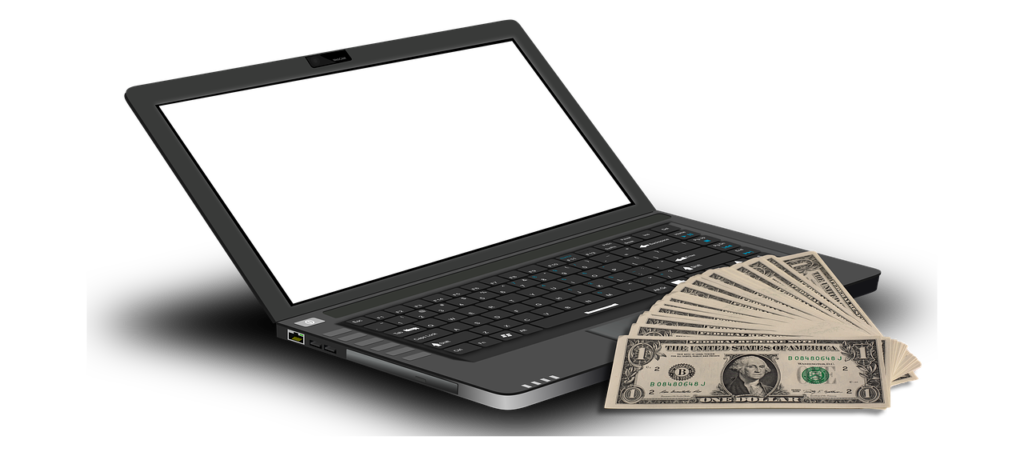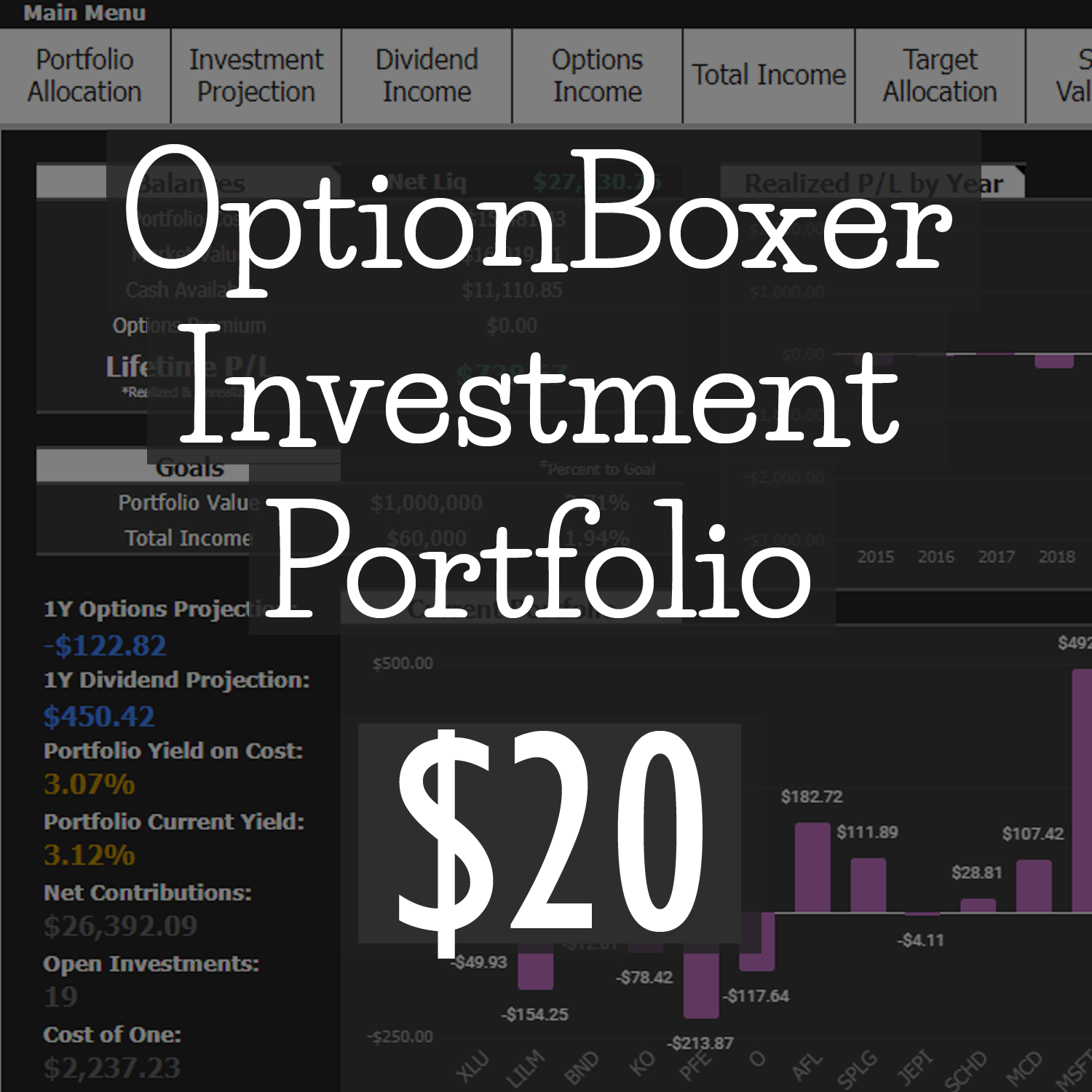Hello again everyone! I hope you’re doing well as we enter the last week of February. The year is well under way and it appears as if the market these day’s only moves in one direction. Up!
It seems like only yesterday everybody was talking about a coming recession and an epic decline in equities. I guess that’s been put on pause as the market continues to roar, and I do mean roar, higher. Honestly, I don’t quite understand how we’re moving so much higher but I am enjoying the portfolio growth all the same.
For today’s post, I thought I’d take a step back into reality and discuss a strategy that far to few even know exist. The t-bill & option strategy is the very essence of a risk free trade. By placing most of our money in risk-free interest bearing accounts we eliminate the copious amount of risk generally inherent with options. However, as is also the case with options, the options at our disposal are virtually limitless.
Therefore, I’ll start by discussing the t-bill & options strategy specifically and move into a discussion of the options for implementation. Finally, I’ll close with how I’m considering employing this ultra safe options strategy in my own portfolio.
Before we get into the specifics and my own interpretation, you may want to have a look at this post from Options Trading IQ titled, “Risk Free Options Strategy: Using T-bills & Options”. The post does a fantastic job of providing the strategy and examples for easy understanding.
Now, let’s get into it…
The T-Bill & Options Strategy In a Nutshell
I’ll avoid a long winded explanation of the strategy since that is readily available elsewhere or by simply viewing the post from Options Trading IQ linked above. Instead, I’ll simply offer the strategy in bullet point format so that I can spend more time focused on applying the strategy.
- Buy 90% – 95% of T-bills
- Speculate with 5% – 10% in Options
That’s it… the entire strategy in two bullet points. The idea is that by placing almost every dollar into a risk-free asset that earns interest you’ll be eliminating the possibility of any actual dollar loss. The money used for options trading will be supplied from the interest earned on the risk-free portion of the investment. The primary hope of the t-bill & options strategy is that the options allotment becomes substantially larger and therefore profitable. However, as I’m sure you’re already seeing, the myriad of way’s this could be adapted is far reaching and there is no one “right” way.
Calculating Risk-Free Return
I think the first step we should take would be to approximate our risk-free return. Or stating it another way, calculate the amount of capital we’ll be able to trade options with using this strategy. For this post, let’s assume we have $10,000 dollars to commit to the strategy.
- Capital Available – $10,000
- Current 3 month T-bill Annual Yield – 5.4061%
- T-bill Monthly yield = 5.4061% / 12 = .4505%
- T-bill 3 Month Actual Yield = 1.3515%
From this data, we can approximate that our risk-free return over the next three month’s will be;
- 3 Month Risk-free Return – 1.3515% * $10,000 = $135.15
- 1 Year Risk-free Return = $135.15 * 4 = $540.60
From this we can reasonably assume we’ll have ~$540 dollars of capital to trade options with. However, please note that this is just an approximation because we don’t know if that interest rate will change throughout the year. Depending on changes in the market we may have slightly more or slightly less. To be conservative, I would simply limit options exposure to maybe $450 over the year to be sure.
Options, Options, & More Options
If we wanted to follow a by-the-book approach to the t-bill & options strategy I think we’d simply take the capital available and purchase long calls. However, $450 dollars to buy a long call doesn’t get us very far. We’ll have to purchase something way OTM or select an individual stock that has cheaper options available. Neither of which leads to a high probability or a very high return, in my opinion.
Therefore, we have 2 options. Adopt a different options strategy that meets our requirements or commit additional capital to the t-bill portion of our investment. The former would almost certainly be limited in it’s upside potential and the latter may not even be an option. Thus, the strategy isn’t without it’s own limiting factors.
That said, we do still have that money to speculate with in whatever way we choose. Which essentially means, we’ll need to strike a balance between a higher probability of success and the limited risk capital we have available. Keep in mind however that this is free money and the most we can ever lose is the time associated with employing the strategy.
All told, the options available to us, are again, virtually limitless. I would tend to err towards something with a higher risk to reward paradigm though.
T-Bill Alternatives
In today’s higher interest rate environment, T-bills aren’t the only way to achieve a possible risk-free rate of return. For instance, to avoid the complication of constantly buying T-bills, we may prefer to just let the money sit in a high-yield savings (HYSA) account. Sure, the rate of return will be slightly lower but this would eliminate any need for additional work. Additionally, many HYSA’s are offering up to 5% APY which is basically the same return we could get by investing in the t-bills directly.
Below is a list of relatively safe assets that could serve as an alternative to buying the t-bill’s directly. Each of which is easier to maintain and eliminates the requirement of rolling t-bills each month, quarter, or year. They are listed in order of lowest to highest yield.

High-Yield Savings Account (HYSA)
With the HYSA the money is as liquid as it could be without holding actual cash. At any point the funds could be transferred or withdrawn for use elsewhere. Capital that isn’t tied down is a very attractive feature in case something more lucrative presents itself.

Money Market Funds (MMF)
Similarly to the HYSA, MMF’s are also more or less liquid. The money is available any time and interest is paid as dividends. With t-bill’s the money is unavailable until maturity (If you want to keep the interest). Additionally, money market funds usually offer higher interest rates than HYSA’s but that’s for the added risk, however small it may be.

Treasury ETF’s – $SGOV or $BIL (Ticker Symbols)
Finally, if t-bill’s do truly offer the highest rate of return then it would certainly make sense to use them. By employing one of the ETF’s listed here, or countless others, we would still capture the higher yield without the work. The primary downside of course, would be the small expense ratio these funds charge. Lastly, and I’m not the expert here, there could be liquidity risk to owning these ETF’s should the economy take a dive so do be aware.
Final Thoughts
At first glance the strategy appears to be lukewarm at best. However, with the markets current as frothy as I’ve ever seen them, It could just be a refreshing dose of reality we desperately need. Admittedly, I agree, it’s hard to put money somewhere other than in stocks as they just continue to climb but doesn’t that end at some point?
As for how I’m going to approach this strategy. First, I’ll determine what amount of capital I’m wanting to commit. Obviously, the more the better as I want to give myself the best possible chance at finding success with the options portion of the t-bill & options strategy. Moreover, I’m strongly considering just using the HYSA as that requires absolutely no work (and no risk). That said, the treasury bill ETF’s do look more appealing. It will just come down to how much one earns versus another.
I would ultimately, at least in this environment, opt for long puts over calls. At least until we get some semblance of a market correction. Of course, doing so would forfeit whatever upside remains so I guess we’ll see how things go.
God bless,
Jeff










